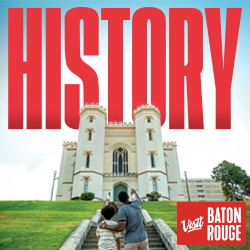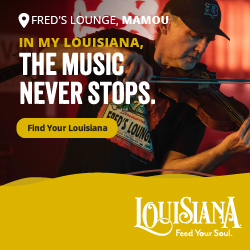The heart of every city is its downtown; It’s the fullest display of a place’s history and character, brimming with opportunities for shopping, eating and enjoying cultural displays.
Many downtowns boast similar attractions, like historic buildings and local eateries and boutiques, but the downtowns in each of these Ohio cities feature a little something extra that makes them a treat for lovers of art and culture. Whether historic and quaint, or bustling and innovative, these Ohio downtowns are sure to charm and entertain group travelers.
Mansfield
Film buffs may recognize Mansfield, Ohio, as the filming location for the hit movie “The Shawshank Redemption.” The penitentiary where the movie is set is just a few miles down the road from Mansfield and now functions as a popular tourist destination. However, downtown Mansfield is known for something else entirely: its Historic Carrousel District. As the name suggests, this area of downtown Mansfield surrounds a hand-carved, hand-painted carrousel that has been bringing joy — and carrousel music — to visitors since it opened in 1991.
“It really became the centerpiece for redevelopment and restoration in downtown Mansfield,” said Jodie Snavely, group tour/media director at Destination Mansfield. “The Carrousel District will feed you, entertain you and bring culture and joy to your life.”
The district offers plenty of charm and entertainment for visitors. Groups can go to the Richland Carrousel Park to take a ride on the picturesque carrousel or enjoy a picnic in the surrounding park. There are plenty of shops and boutiques selling everything from antiques to records. The district also features plenty of local restaurants, bars and wineries. For some live entertainment, groups can head to the Brickyard for a local concert or to the Renaissance Theater or Mansfield Playhouse for a theater production.
Marion
Unlike most of Ohio’s cities, Marion doesn’t have a town square. Instead, it has what’s known as the Cultural Corridor, which refers to two streets — Center Street and Church Street — running parallel to each other to form the heart of Marion’s downtown. The corridor features nearly two miles of the town’s historic buildings, shops, restaurants and art galleries for travelers to explore.
“We developed the concept of the Cultural Corridor to express how our downtown is a little different than others but still has the same great things,” said Mark Holbrook, executive director of the Marion Area Convention and Visitors Bureau.
Lovers of theater and the performing arts will find plenty to see and do in Marion. One of its cornerstone attractions is the historic Marion Palace Theater, where local theater productions have been entertaining audiences since 1928. Groups can arrange an activity called The Stage Is Set Luncheon, where they dine on the stage overlooking the audience and take a tour of the theater.
Another prominent attraction sure to impress history buffs is the home of Warren Harding, the 29th president of the United States, and its accompanying museum.
Visitors can also take a stroll along the Corridor to check out Marion’s most recently completed public art project, 17 cardinal statues around town. These six-foot-tall, uniquely decorated statues are a colorful way to represent Ohio’s state bird and its status as the 17th state in the U.S.
Columbus
It should come as no surprise that the capital city of Ohio offers plenty of culture and entertainment for visitors to enjoy. Columbus, founded over 200 years ago, is the most populous city in the state. Downtown Columbus functions as the center of the city’s many signature neighborhoods and is host to a variety of lively activities for travelers to enjoy. The burgeoning art scene is giving Columbus a reputation as a trendy and innovative area with lots to do for tourists and locals alike.
“You can find several different meccas of arts and culture,” said Marie Kuess, destination experience program manager at the Greater Columbus Convention and Visitors Bureau.
Groups can pay a visit to the Columbus Museum of Art, where a rotating collection of many types of fine art is displayed. At the Cultural Arts Center, a gallery specializing in emerging artists, travelers can take art classes and workshops. Visitors can check out the art galleries at Columbus College of Art and Design free of charge. There are also many theaters and performing arts venues downtown, such as the Columbus Commons Park, where visitors may catch a concert or special event.
After a day of exploring the city’s art scene and shopping, travelers can unwind with a visit to one of the area’s many popular breweries and bars. Downtown is home to many restaurants and vendors, from food trucks and cafes to top-tier steakhouses.
New Philadelphia
New Philadelphia, one of several small towns in history-rich Tuscarawas County, was founded in 1804 and modeled after Philadelphia. New Philly, as it’s affectionately nicknamed, started out as a small village before the Ohio-Erie Canal allowed the agriculture, steel and coal industries to thrive. The small town is experiencing a resurgence, and that’s partially thanks to its charm and unique aesthetic. A collaboration between the city and local artists has resulted in an explosion of vibrant artwork on the streets in the form of murals. In New Philadelphia, all things mundane, from alleyways to the city’s trash cans, have been transformed to bring visually appealing pops of color to the streets.
“We have this whole art scene that’s really coming alive,” said Julie Levengood, group tour manager at the Tuscarawas County Convention and Visitors Bureau.
From its colorful aesthetic to its plentiful shopping and dining experiences, New Philly is a place worth checking out. Groups can take a mural walk around town to see its growing collection of murals and learn the city’s history. Or, to see some more traditional works of art, visitors can explore the city’s local art galleries. Those interested in theater and the performing arts can see a production at the city’s outdoor amphitheater or its performing arts center. They can enjoy live music on the street and pop into artisan shops or the farmers market for locally made food and souvenirs. The downtown area features local restaurants offering a broad range of atmospheres and foods, from bar food to fine dining.
Waynesville
The village of Waynesville, in Warren County, was founded in 1797 with hopes of being a major settlement in the region. Though the village never became heavily populated, today it’s known for hosting the annual Ohio Sauerkraut Festival, which attracts hundreds of thousands of attendees over the span of one weekend every fall. Waynesville is also recognized as the Antiques Capital of the Midwest. The village itself is older than Ohio, and it’s this rich history and its small size that contribute to its notoriety and charm.
“There is such history there,” said Kelly Miller, executive director of the Waynesville Area Chamber of Commerce. “There’s something for everybody there.”
Groups can take a walking tour of the downtown area to learn about the village and the historic buildings that give it so much character. Travelers can peruse any of the dozens of boutiques, galleries and shops along Main Street. Many artisan stores offer visitors the opportunity to make their own crafts for a one-of-a-kind souvenir. During the warmer months, the town hosts street fairs, featuring plenty of local artists and merchants. Visitors to the village can grab a bite at one of downtown Waynesville’s local cafes and restaurants, like the restaurant at the historic Hammel House Inn.











